The Hoddle Street Shootings would never have happened had Julian Knight attended the Officer Cadet School Portsea instead of the Royal Military College Duntroon.
The Portsea school structure, constructed in 1951 in coastal Victoria during the imperatives of the Korean War (1950-53), was of a smaller scale, more practical infantry battlecraft training methodology and culture compared with the much larger, older and more institutionalised old-school-tie elitist RMC Duntroon in Canberra, established in 1911, pre-WWI.

Duntroon had a notorious reputation for abuse and bastardisation of junior cadets. It had a 3 class-structure of 400-odd cadets over five companies, whereas at Portsea more low-key ‘bishing’ (tomfoolery) took place between just two classes of 60-odd cadets. Portsea was a lean, pragmatic and more closely-knit infantry platoon commander training unit. It was never an academic tertiary institution like Duntroon was set up to be.
Duntroon was always far larger in area, scale, cadet numbers and its course duration than OCS Portsea. Whereas Duntroon traditionally delivered four-year combined tertiary degree course, infantry training and platooon commander training, OCS Portsea had a hectic training schedule of just 12 months of purely infantry platoon commander training, with little time for bully-boy bastardisation shenanigans.
Duntroon usually has up to as many as five companies of cadets training of three tiered classes at any one time (Long Tan, Alamein, Gallipoli, Kapyong and Kokoda) with as many as 425 cadets training at any one time. This compared with just two companies at Portsea (Company A and Company B) of up to a combined total of 60-odd cadets training at any one time, so 1/7 the size of Duntroon.
“The Officer Cadet School, Portsea was begun as an expedient solution to a problem which had been sown in the 1910 decision that the necessary qualifications for Permanent commissioned officers would be obtained through the Royal Military College, Duntroon.
The inflexibility of this source made it inevitable that at some stage an avenue of regular officer production more responsive to the needs of quick expansion in peace would be needed: the product was the Officer Cadet School, established at Portsea in 1951 against the background of the training demands of a new scheme of National Service for all male 18-year olds which included a full time initial training component.”
– Colonel Neville R. Lindsay OAM, 1994
OCS Portsea had a superior excellent reputation for intense pragmatic focus on the fundamentals of soldiering, military education and training, including basic infantry training and producing quality junior Army officers (platoon 2IC commanders) of soldiers over just one year.
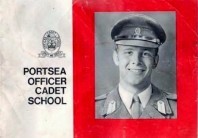
Eligibility criteria was male (until 1984), aged 18 and a half on entry to maximum 25) displaying a level of maturity “to handle and come out of a short intense course ready to command a platoon”, with schooling to minimum of ‘Leaving Certificate’ level (Year 11 today), a high medical standard and minimum height of 5ft 4in (163cm), and an Army officer intelligence which would enable a cadet to cope with the high input of instruction and end up as a thinking officer.
Relevant to Julian Knight who had gained a one year Army Reserve service background, statistics showed that a quarter of recruits to OCS Portsea tended to come from the Australian Regular Army.
Notable graduates officers include Major Peter Badcoe, VC (who served in Vietnam), Lieutenant David Brian, the first graduate to be killed in action (Thai-Malay border in 1964), Group Captain Robert Halverson (and formerly Speaker of the House of Representatives), Lieutenant General Frank Hickling (formerly Chief of Army in 1998), Lieutenant General Ken Gillespie (formerly Chief of Army in 2008), Lieutenant General David Morrison (formerly Chief of Army in 2011 and Australian of the Year in 2016), Lieutenant General Sir Jerry Mateparae (formerly Chief of the New Zealand Defence Force and later Governor-General of New Zealand), and Major Les Hiddins who served two tours of Vietnam, and later became TV star of the show ‘The Bush Tucker Man’.
Established in 1951, OCS Portsea had the Army brief to select natural leaders to train up and to annually deliver junior Army officers with suitable capability to the Australian Army who would then progress and develop in active service. The Army at the time had lost many of its officer ranks from the recent WWII and then being committed in the Korean War soon after, was in short supply of new junior leaders. So, OCS Portsea accepted a broad range of natural leaders as recruits, varying from direct entry civilians to serving soldiers, to regular Army NCOs and Army reservists (like Julian) and also accepting a wide variety of ages from aged 18 to 24.

Between June 1952 and December 1985, OCS Portsea graduated about 40 percent of the new officers commissioned into the Regular Army, compared with Duntroon’s near 30 percent (Duntroon was far larger but had more dropouts because of the bastardisation). The remaining 30 percent officers were provided by the Officer Training Wing of the Women’s Royal Australian Army Corps (WRAAC) School headquartered situated at Lonsdale Blight Military Camp, Ocean Road at Point Lonsdale on the Ballarine Peninsula in coastal Victoria (on the other side of The Heads, 1951-1984); the Officer Training Unit (OTU) at Scheyville, situated in outer north-western Sydney (mainly for training National Servicemen 1965-1974), else for selected CMF National Service NCOs (1951-72) offered casually at various night school classes around the country.
The training barracks and grounds were dedicated to pragmatic training of junior officers for Australian Army combat. It was a lot smaller and more professionally run than Canberra’s larger and more academic and bully-boy Duntroon boarding school. Graduate second-lieutenants out of a school of hard knocks and no-frills Portsea OCS earned genuine respect from Australian Army troops and NCO’s under their junior command compared with the arrogant bully-boy elites of Duntroon’s boarding school culture.
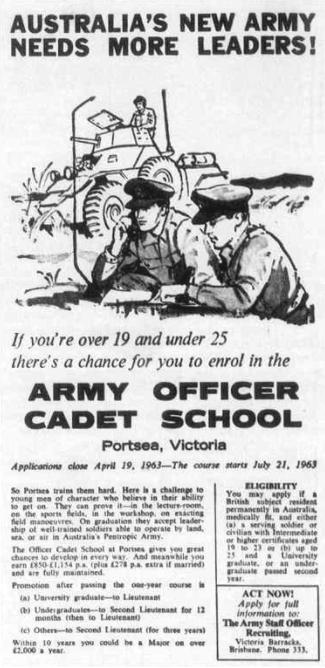
So, OCS Portsea would have been ideal for Julian given that it was situated within his home state of Victoria just a few hours’ drive from his family home in Melbourne – OCS was local and accessible.
Culturally also, Portsea was staffed by Victorians – cadets with local extended families, local upbringings, who all grew up and knew the state, all the place names, the local stories, all followed Aussie Rules footy (not NRL), all who read the same state-based news, slang, drank the same local beer, etc, etc.
So, OCS Portsea would have been basically home turf for Julian Knight and with the focus on pragmatic soldiering, which Julian already possessed from his Army Reserve and School Cadet experience. This means that he could have leapfrogged and single-mindedly focused from the training outset on the more advanced platoon rifle command leadership training skills he sought for his Army career.
Regrettably, that was not possible because in December 1985 OCS Portsea, despite its superior clean and non-nonsense reputation compared with Duntroon’s troubled record, was misguidedly mothballed by Canberran politics to simplify and consolidate all Australia’s Army Officer Training singularly to RMC Duntroon in the distant public service domain of Canberra. The decision was a combination of cost-cutting, but moreso centralising control of training by the Brass and ADF boffins in Canberra.
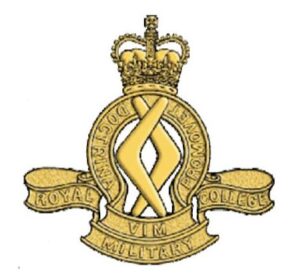
In stark contrast to purpose-designed OCS Portsea, Canberra’s Royal Military College (RMC) at Duntroon was situated interstate to Julian Knight being a day’s drive (over 600km) away from his home in Melbourne, in the Canberran public servant bubble and a distant, unknown institution.
Indications of just how different RMC Duntroon was from OCS Portsea in respect to training style, focus and culture are most evident by the final cadets of OCS Portsea of the June 1985 intake who the Army required to finish their training OCS Portsea training of 22 weeks with a year’s training at RMC Duntroon in 2nd and 1st Class. Duntroon was a wholly different animal to Portsea.
Julian Knight:
“At the time I entered RMC there were around 300 senior cadets (1st Class & 2nd Class) there. (The 18-month course at Duntroon was divided into three 6-month “classes” as opposed to the two 6 month “classes” of the 12-month course at the Officer Cadet School, Portsea, that it replaced.)
I once asked a 1st Class cadet in Kokoda Company, Corporal Gavan CARTER (CSC No 4939) – the last officer cadet from OCS (in Kokoda Company) to graduate -“Was Portsea anything like this (Duntroon)?” He instantly, and almost contemptuously, replied, “Portsea was nothing like this!”
I must add that I found Corporal CARTER to be the most approachable of all the senior cadets encountered at Duntroon.”
Julian Knight’s Personal Account to the Defence Abuse Response Taskforce (DART), 26th November 2013, p.9
Duntroon is a lot older in old-school training traditions, dating back forty years before OCS Portsea to 1911 (Federation era) in which culturally the British aristocracy and class elitism persists and remains unquestioned and encouraged through its internal subculture of regulations, tribal lores, and abusive juvenile practices designed to ‘weed-out’ non-conformists.
OCS Portsea’s brief was too busy to prepare young men in both the Army and Air Force to command soldiers in battle in just 12 fast-paced months. OCS Portsea was not about culture but pragmatically readying natural leaders to be skilled up to 2IC command a rifle platoon in battle – the cadets simply didn’t have time for such boarding school shenanigans or infantile classist coercive bully-boy distractions, notorious at Duntroon.
Traditionally, the Royal Military College of Australia at Duntroon was a four-year dedicated Army officer training college combined with a university bachelor degree course – a limited choice of academic stream between Arts, Science or Engineering. The rationale was to provide graduates with a higher academic capacity to later advance to senior officers to better lead the Army. The military curriculum was aimed to achieve the balance between the short-term requirements of a junior regimental officer (akin to OCS Portsea) as well as the broader foundation necessary for senior ranks for a lifetime career with the Army.
Askance, why does the ADF deliberately exclude the pragmatic academic stream of Commerce/Business? Well, cynically the ADF is a public service, wholly funded by Australia taxpayers to free-reign do and spend what it wants. The ADF has no motive or imperative to earn or to save other people’s money. Therefore, commercial goals are irrelevant to the ADF, which has become and extension of the Canberra public service bubble. For example, under the ADF’s 2022 push to acquire 8 nuclear submarines for use in the unspecified distant future, well the forecast delivery cost to becoming militarily operational is as high as $171 billion, according to a new report from the Australian Strategic Policy Institute. [Read More]
The Australian Regular Army had been traditionally based at Victoria Barracks on St Kilda Road in Melbourne since colonial times, way before the political notion of Canberra was even conceived as Australia’s bush capital to pacify power struggles between Victoria and New South Wales.
It was a political decision to establish an Army officer training school outside Victoria. RMC was established on an isolated pastoral sheep station ‘Duntroon’ in inland New South Wales in 1911, just a few years before the area around it would be also chosen to be Australia’s new capital, Canberra. It was part of the Canberran political compromise between rival Sydney and Melbourne that dated to colonial times.
The site of Duntroon was chosen for the Army college to appease the Sydney-Melbourne political rivalry by being approximately mid-way between the two main cities, the same political justification for siting Canberra in 1913, two years later, and the High Court of Australia was finally moved from Melbourne to Canberra as late as 1980. The nearest substantial town was Goulburn about 90 km to the north-east. From Federation in 1901, Melbourne had been Australia’s capital, but rivalry and differences between the colonies had been a cultural feature of life since colonial settlement, notably played out in trade and in sport.

Ironically, many a cadet at RMC were and continue to be treated as compliant sheep. Up until 1985, the cadets at Duntroon were structured into four tiers, one tier for each progress training year – from entry junior Fourth Class to pre-graduate senior First Class. This perpetuated classist boarding school subculture mindset replete a repeating annual cycle of intimidation, bullying, indoctrination and bastardisation by the senior cadets of the junior cadets.
In 1986, just the year before Julian Knight attended Duntroon, the four-year term was condensed into an 18 month (three six-month) classes structure, removing the university degree education and only focusing on the military component of the training. This is because of the establishment of Australian Defence Force Academy (ADFA) on the northern side of the hill to Duntroon that same year as a single tertiary institution for not just the Army but as a ‘tri-Service’ university for the entire Australia Defence Force (including for the Royal Australian Air Force and the Royal Australian Navy).
It is noted that Duntroon since its inception in 1911 (and likewise ADFA since 1986) have both developed a persistent sorry reputation for cadet abuse, scandals, of immoral behaviour unbecoming of officers and subsequent serious crimes later on active duty. [Read More: https://en.wikipedia.org/wiki/Brereton_Report]
Portsea’s historical background
OCS Portsea derives its name from the adjacent tiny holiday village of Portsea, being the last village heading westward of a string of holiday villages along the ‘front beach’ bayside of the Mornington Peninsula approaching Point Nepean and The Heads entrance to Port Phillip Bay. Portsea is by far the most exclusive and affluent on the ‘Peninsula’. The village was named after the first maritime Portsea Pier which was constructed c.1860 by English convict then free settler and entrepreneur James Sandle Ford (1811-1890) so he could ship his burnt lime produce directly to Melbourne.
It is generally believed that Portsea was named by Ford after the South Parade Pier on Portsea Island in Portsmouth, in his native England, from which he was transported in 1830 to Van Diemens Land as a convict 7 years after being convicted of machine breaking.

Eager to make a new life after his pardon in 1836, Ford made his way to Port Phillip (pre-Melbourne) and by 1844 he had acquired a license for a pastoral run at Point Nepean.
This remote wind-blown site was used by Ford as a cattle station and for horse breeding, cropping and in particular for lime quarrying and bush kiln burning being despatched by schooner for lucrative sale as vital mortar in the colonial stone building demand of early Melbourne.
After the pastoral land at Point Nepean had been abandoned, by 1852 during the Victorian Gold Rush, many prospectors from abroad arrived in Australia by boat. However, the overcrowded and unsanitary conditions on board most vessels meant that deadly contagious diseases spread rapidly in the colony. So, the Victorian goverment acquired the isolated Point Nepean site inside The Heads as a maritime quarantine station in order to protect the local population of Victoria and particularly of Melbourne.
Point Nepean Quarantine Station consisted of around 50 buildings, featuring a community of hospitals (sample below), a disinfecting complex, morgue, cemetery and other defunct buildings comprised an infectious disease facility which processed newly arrived humans and livestock alike. Foreign contagious diseases quarantined at the time included small pox, leprosy, influenza and by 1919 the Spanish Flu pandemic. It remains as the second oldest intact quarantine station in Australia.

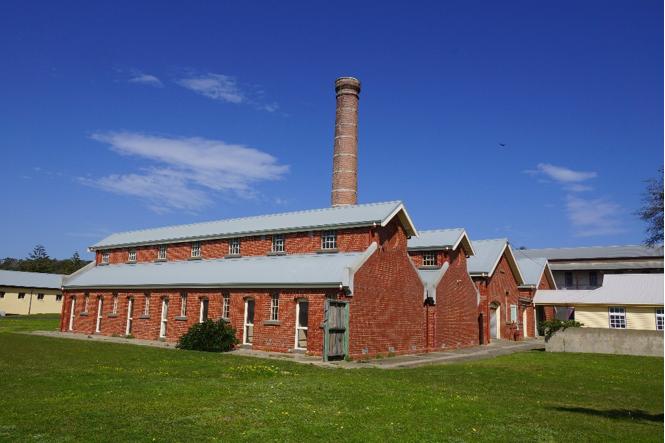
The Quarantine Station at Point Nepean remained functional from 1852 to 1980.
In the late 19th century, the Russian Empire had a large and aggressive global naval fleet and fears of Russian empirical expansion by invasion especially of then British colonies including distant New South Wales and Victoria were felt to be very real. In 1841, the then British colonial government in New South Wales built a fort at Pinchgut to defend Sydney Harbour from an anticipated Russian naval invasion.
Later, in the lead up to The Great War, between 1910 and 1916 fortifications were constructed either side of The Heads of Port Phillip Bay at Point Nepean, Queenscliff and on Mud Island just inside The Heads, as well as down at Battery Point on the Derwent River approach to Hobart.
Point Nepean became Fort Nepean with two open concrete gun pits for Mk VII guns constructed and a large underground magazine between the pits, a battery observation post, ship direction range finder and gun crews. At the outbreak of the war, additional men of the Royal Australian Garrison Artillery and Royal Australian Engineers were posted to Fort Nepean. Additional barracks were constructed at Fort Pearce and were named Pearce Barracks, consisting of officers’ quarters, two huts for the NCOs and men, ablutions hut, a cook house and store, mess, office, workshop and parade ground. Fortunately, the guns at Fort Pearce were never needed to fire in anger.
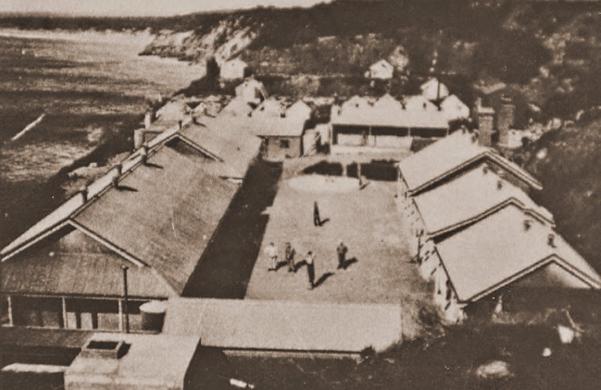
Later during WWII, Fort Nepean was further fortified and utilised by the Army as a military defensive facility to protect Port Phillip Bay and the city of Melbourne against the conquering imperial Japanese naval and air attack as part of a network of fortifications, commanded from Fort Queenscliff situated on the western side of The Heads entrance to the bay. Additional huts, a fuel store and a larger ablutions block were constructed at Pearce Barracks from 1939 with machine gun and mortar pits dug into the sand dunes around the fort and manned throughout the war by 2nd Battalion Volunteer Defence Corps.
After the Japanese air attack on Rabaul in 1942, it was decided the exposed battery was vulnerable to air attack and the guns were moved to nearby Cheviot Hill with “C” Company 5th Battalion Volunteer Defence Corps (VDC) was based there with a 6-inch gun in preparation for the likelihood of a Japanese attack by air from aircraft carriers offshore. A 14-pounder Nordenfelt quick firing gun was mounted at Pearce to protect the barracks anchorage in Port Phillip.
Post-war, from 1946, Fort Nepean and Pearce Barracks were not continuously manned. However, it was historical, logical, and appropriate a century later that the establishment of OCS Portsea in 1951 at Point Nepean as an Army officer training base, after the site had been a defence quarantine station in 1852. The Regimental Sergeant Major’s hut is believed to be one of the oldest buildings in Victoria.
OCS Portsea
Amidst the backdrop of the post-war period (WWII), during Australia’s subsequent military commitment to the Korea War (1950-1953) and its newly created compulsory Citizens Military Force, the Army established Officer Cadet School (OCS) Portsea to utilise the vacated Pearce Barracks and its surrounding isolated sand dune landscape on the tip of the peninsula from 1951. It was mainly due to the Australian Government’s National Service Scheme (1951-72) and the consequential need to boost the number of junior officers in the Army. For many years OCS Portsea provided the Australian Regular Army with the bulk of its junior officers.

Australia’s National Service Scheme involved compulsory military training for young Australian men was reintroduced in 1951 by the Liberal and Country Party alliance Government. It was the third such scheme to have existed in Australia since Federation. Australia’s Universal Service Scheme (1911–1929) established the Citizen Military Forces (CMF) legislating compulsory naval or military training for all Australian males between the ages of 12 and 26. This was re-introduced by Prime Minister Menzies as compulsory ‘Conscription’ in 1939 at the outset of World War II initially for all unmarried men aged 21 to undertake compulsory three months’ military training in the Citizen Military Forces (CMF). After the Japanese bombed Darwin and then Sydney in 1942 in preparation for invading Australia, conscription extended in mid-1942 for all men aged 18–35, and single men aged 35–45.
Under Australia’s National Service Scheme (1951-72), 18-year-old men were required to undertake 176 days of military training in the CMF. By the late 1960s the scheme became publicly criticised as being irrelevant to modern defence needs, with skill was becoming more important than numbers. The scheme was also costly for the Regular Army, as manpower resources and funding had to be diverted from ongoing operational requirements to support the recruitment and training of short-term personnel. Incoming Labor Prime Minister Gough Whitlam abolished National Service and the CMF on 5th December 1972.
The four-year course at the Royal Military College, Duntroon was not flexible enough to enable this increase in junior officers, so the decision was made to establish the Officer Cadet School at Portsea. Portsea OCS grew out of Pearce Barracks from 1910, and has a military defence heritage legacy predating RMC Duntroon. Only by three years, but predating and so historically senior to Duntroon no less. Victoria’s capital Melbourne indeed pre-dates the politically appeasing fabrication that is Canberra as Australia’s original national capital from 1901.
Unlike Duntroon in Canberra, Portsea did not provide a four-year integrated degree course, but rather specifically trained would-be junior officers over a shorter 12-month course. Entry criteria differed to Duntroon, with broader age ranges and lower educational requirements; consequently a high proportion of Portsea’s officer cadets were serving soldiers deemed suitable for commissioning.
At OCS Portsea, the first training intake of Army officer cadets began in January 1952 and was initially a fast-tracked 22-week (4-month) intensive course designed to train cadets to be compenent Infantry rifle platoon commanders.

If successful, each would but graduate at the lesser rank of Second Lieutenant and be posted to a Corps under the mentoring guidance of a servicing full Lieutenant in order to develop real Army field service experience before being considered eligible to earn promotion to full Lieutenant and then possibly an Army career through the officer ranks.
OCS Portsea’s colours were presented on 1 June 1968, by Prince Philip at the South Melbourne Cricket Ground. They consisted of a Queen’s Colour with the OCS motif in the centre and a Regimental Colour that was an infantry green flag with the regimental badge, title and moto surrounded by wattle sprigs (right side of image below).
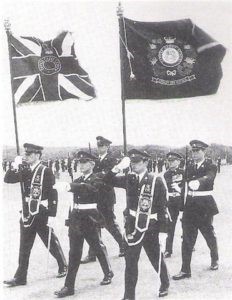
OCS Portsea became the preferred Army officer training course in Australia to Canberra’s Duntroon, because Portsea was simply focused on advancing suitable Army leaders to train to officer rank, without the notorious Canberra politics, bullshit and bully-boy bastardisation of Royal Military College being founded at Duntroon in 1911.
OCS training provided the basis for future career development for all Australian Army officers. Cadets graduated with the rank of Second Lieutenant except when graduates holding tertiary qualifications were commissioned as Lieutenants.
The first six OCS courses were initially a fast-tracked 22-week (6-month) intensive course which later ran for 44 weeks (one year allowing for leave breaks). A significant number of OCS cadets were direct entry civilians who had to first learn basic infantry training skills, as well as Army protocols and then advance to junior platoon commander leadership skills. Successful completion saw cadets graduate as an Army second lieutenants ready for Corps assignment and ongoing in-service training and advancement.
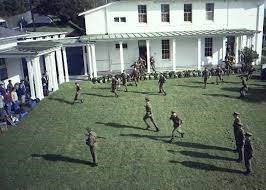
During its 33 years of operation, 3,544 cadets graduated, including 2,826 Australian Regular Army, 30 RAAF and 688 foreign students from the School until it closed in 1985.
Between 1952 and 1985, OCS Portsea trained 40 percent of the new officers commissioned into the Regular Army, compared with Duntroon’s 28 percent. Additionally, OCS trained servicemen from other nations including the Philippines, South Vietnam, Cambodia, Brunei, Malaysia, Singapore, Papua New Guinea, Kenya, Uganda, Fiji and New Zealand and those graduated were commissioned into their respective services. A number of graduates were also RAAF officers.
Julian Knight aspired to attend OCS Portsea
Julian Knight had always aspired to undertake Army officer training at OCS Portsea rather than at RMC Duntroon in Canberra. Prior to 1986 there was indeed such a choice.
OCS Portsea naturally had been Julian Knight’s preferred choice for Army Officer training, since Portsea was located Victoria and accessible from Melbourne, his home town. The OCS training culture was not academic but purely pragmatic infantry basic training for the first 22 weeks, advancing to infantry platoon command leadership training. Portsea had a more professional reputation than Duntroon’s notorious boarding-school abusive bullying and bastardisation culture.
But for julian, his key problem was that before he turned 18, military politics had decided to mothball Portsea OCS, despite it having an excellent reputation as a junior Army officer training facility that was not broken. The exemplary OCS Portsea was decommissioned when Julian Knight was aged 17 and so just one year too young to apply. OCS Portsea’s final Junior Class commenced with the June 1985 intake over 44 weeks (12 months). Julian was born on 4th March 1968. By the final junior intake of June 1985, Julian was aged 17 years, 3 months. As it turned out, that final class was relocated to RMC Duntroon in Canberra in January 1986 to complete an additional full 18 month course.
Post-WWII, in the wake of Australia’s military involvement and stalemate outcome in the Korean War (1950-53) and strategic failures in the Vietnam War from 1966, the command off the Australian Army was trending toward a re-think and nationalisation/centralisation command and control hub in Canberra. In 1969, senior Army brass along with general and administrative staff of traditional Army Headquarters at Victoria Barracks in St Kilda Road Melbourne were politically relocated to Canberra – to be situated close to the centre of national government and parliament of Australia. This left only Ordnance and Signals corps as Army outposts in Melbourne, and Puckapunyal for soldier general enlistment training and OCS Portsea for Army officer training, complementary to Duntroon (in Canberra).
Following Australia’s military commitment in the Vietnam War (1962-75), the national service scheme ended and the OTU Scheyville was closed in 1973. In the mid-1980s, a review of military training establishments in Australia occurred.
The Army Brass decided in 1977 under the Liberal Fraser Government at the time to agree to military budget cuts and centralise officer training to Duntroon in Canberra. As a result, a decision created a tri-service military academy offering tertiary education to officer trainees of all three services (Army, Air Force and Navy). This academy became known as the Australian Defence Force Academy (ADFA). Due to the formation of ADFA, the Royal Military College, Duntroon stopped providing degrees to its graduates and reduced its course from four years to eighteen months commencing in January 1986. This essentially meant that Duntroon and OCS were providing the same training and the decision was made to close Portsea.
Mothballing of OCS
The final OCS Portsea graduating class was in December 1985, which included female cadets for the first time following the closure of the Women’s Officer Training Wing in December 1984.
The Royal Military College, Duntroon then became the sole training establishment for General Service Officers in the Australian Regular Army. On 23 March 1986, the Colours were paraded for the last time and were then laid up in the Anzac Memorial Chapel of St Paul at the RMC, Duntroon.
The final cadet intake at OCS Portsea was in June 1985. They would not have know nf the impending closure of OCS just six months later in December 1985. In January 1986 they were transferred to Duntroon to undertake the full 18 months training so doing a total of two years training combined and graduating in June 1987. It is unlikely that this last cadet intake of June 1985 would have been told by The Army at the time of its intentions to mothball OCS Portsea in December 1985 during their officer training, and to have them all redo 18 months officer training at Duntroon, so end up completing not 12 months officer training, but all up, 2 years! Nice one Army bureaucracy!
As mentioned above, one of the last officer cadet s originally from OCS Portsea to graduate from Duntroon was staff cadet Corporal Gavan CARTER (CSC No 4939) a 1st Class cadet in Kokoda Company. Carter would have been more mature than the other 1st Class cadets at Duntroon. Julian recalls getting along with Carter well.
The Army abandoned Point Nepean and the Officer Cadet School was no more.
In early 1986, the barracks and buildings of former OCS Portsea were seconded for use by the Army School of Health’s Environmental Medicine Unit (EMU) until 1998 when that school too abandoned the Point Nepean site, to relocate to Latchford Barracks in Bonegilla outside the Victorian town of Wodonga on the banks of Lake Hume. Another decade later, in June 2009, the entire Commonwealth land tip of Point Nepean was transferred to the Victorian government and subsequently incorporated into the new greater Point Nepean National Park, opening to the public in December of that year.
The Defence legacy of Portsea is now heritage listed with the 19th Century hospital a museum to the days of the old quarantine station.
Following The Battle of Long Tan in the Vietnam War, the famous Portsea Memorial Wall established in late 1966 overlooking the Portsea parade ground had been dedicated to OCS graduates who had lost their lives on active service.
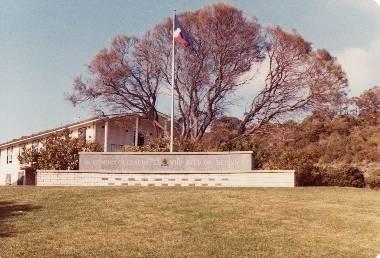
In 2001, the entire wall and its plaques were carefully dismantled and re-erected outside the Commandant’s house at Duntroon. In 2004, the Duntroon Heritage Committee decided to again relocate The Portsea Wall to a park off Harrison Road on Duntroon’s college grounds, but minus the flag pole (see below). Significantly, Harrison Road is named after Major General Sir James William Harrison (1912-1971) who served throughout WWII and later as a colonel, appointed as the first commandant of the Officer Cadet School at Portsea (1952-54).
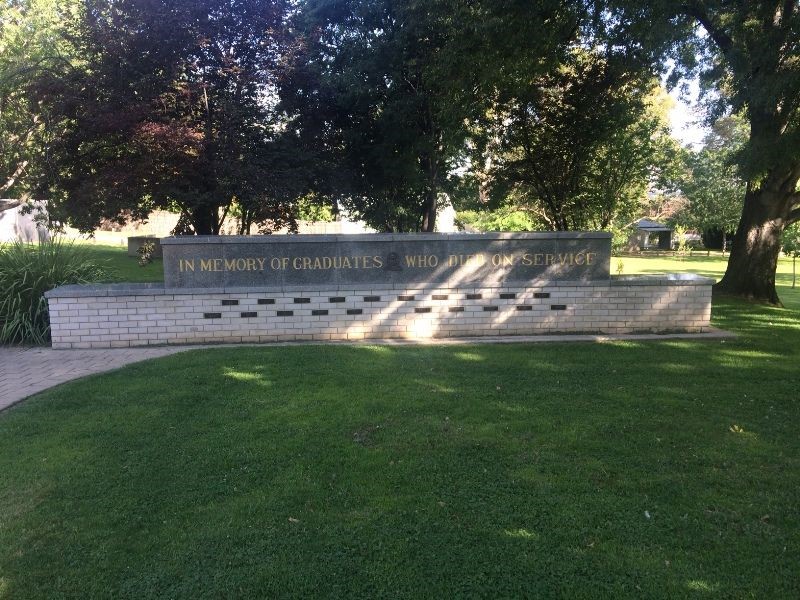
Meanwhile, back at Point Nepean in Victoria, a statue memorial to OCS Portsea officer cadets was established in March 2021 above Jackson’s Road, Point Nepean National Park (formerly OCS Portsea).
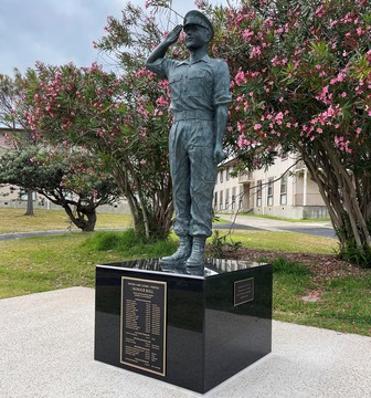
Julian Knight’s single-minded Army career ambitions had always been to attend Portsea OCS as a natural progression from being a real professional infantry soldier to leading those same soldier in combat. It was not to be part of the Duntroon polished elite.
However, in 1985 Julian was just 17 and still under-aged to be able to enlist in the Australian Regular Army and to be eligible to attend officer training at Portsea OCS. It was the year that Canberran politics mothballed Portsea OCS, garotting this most reputable Army junior officer training school in Victoria.
Of OCS Portsea:
“The graduates of the School (OCS Portsea) were not confined to this (National Service), becoming an integral part of the Australian Army: its training, command and administration both at home and in the military deployments in Asia to contain the spread of expansionist totalitarian regimes during the 1950s and 1960s.
The Portsea men provided distinguished service which matched that of their colleagues from Duntroon, and when the establishment of the Australian Defence Force Academy to cover civil academic education left both Duntroon and Portsea with the same function of military education, one had to go, Duntroon remaining on its seniority.”
– Colonel Neville R. Lindsay OAM, 1994
Duntroon took over and everything got centralised – a politically cost effective ‘one size fits all’ simplification and watering down of military leadership training, like ADFA. It has proven to be one of the ADF’s worst strategic decisions in Australian history in many ways.
“All institutions, indeed all of mankind’s works, have a finite lifespan. In the case of the Officer Cadet School at Portsea, this stretched over three decades. Once it became clear that the regular Army no longer needed, nor could afford, two major officer training institutions, the School’s fate was sealed.
The advent of the Australian Defence Force Academy (ADFA) was the final nail in Portsea’s coffin and it is therefore ironic that the former institution’s Commandant (Colonel Neville R. Lindsay), at the time of writing this, is also a proud graduate of the Officer Cadet School.”
Major General Frank J. Hickling, ADFA, Canberra 18 August 1995 (OCS graduate 1961)
From 4th December 1985 to 12 January 1987 Knight had served as a trooper in the 4th/19th Priunce of Wales Light Horse Regiment of the Army Reserve and in late 1986 was deemed suitable for commissioning by the Army’s officer Selection Board.
Julian Knight was accepted into Duntroon in the January 1987 intake for the new shortened 18-month Army officer training course. So this infantry tranining and field experience had mostly prepared him for the basics of infantry training in the first six month phase as a 3rd Class Officer Cadet at Duntroon, but not for Duntroon’s infantile culture of bastardisation, abuse and relentless torment by senior cadets. He put up with the crap for four months then snapped in the fifth month. Hoddle Street followed within two weeks of his Army discharge.
Arguably, the Hoddle Street Shootings would not have happened had OCS Portsea been still operating for the June 1986 intake in which Julian turned 18. Julian Knight passed the Army Officer selection board for the lot more discerning Duntroon, so in all likelihood he would have likewise passed elibility criteria for OCS Portsea, given the criteria were not as stringent. He would have avoided the Duntroon bastardisation and his Hoddle Street psychotic rampage would never have happened. Instead, Knight may well have gone on to serve in Australia’s many overseas deployments with bravery and distinction over a 20+ year Army Infantry career to a mid-level Army officer such as to the rank of Major.
References
[1] Officer Cadet School, Portsea, by Wikipedia, https://en.wikipedia.org/wiki/Officer_Cadet_School,_Portsea
[2] Officer Cadet School Portsea, (a comprehensive history record), https://www.ocsportsea.org/
[3] OCS Cadet Statue Unveiling, OCS Portsea, 18 March 2021, https://www.ocsportsea.org/ocs-cadet-statue-unveiling-18-march-2021/
[4] National Service Scheme (1951-1972), Australian War Memorial, https://www.awm.gov.au/articles/encyclopedia/conscription/vietnam
[5] Second World War Conscription, National Museum Australia, https://www.nma.gov.au/defining-moments/resources/second-world-war-conscription
[6] Conscription in Australia, by Wikipedia, https://en.wikipedia.org/wiki/Conscription_in_Australia
[7] Universal Service, https://www.awm.gov.au/articles/encyclopedia/conscription/universal_service
[8] Vietnam War, Australian War Memorial, https://www.awm.gov.au/articles/encyclopedia/conscription/vietnam
[9] Korean War, Australian War Memorial, https://www.awm.gov.au/articles/atwar/korea
[10] Portsea Memorial Wall, https://monumentaustralia.org.au/themes/conflict/multiple/display/90118-portsea-memorial
[11] Officer Cadet School Portsea Memorial, https://vwma.org.au/explore/memorials/6968
[11] Quarantine Station, Parks Victoria, Victorian Government, https://www.parks.vic.gov.au/places-to-see/parks/point-nepean-national-park/attractions/quarantine-station
[12] Early Pioneers 1835-1870, Nepean Historical Society, Sorrento, Victoria, https://nepeanhistoricalsociety.asn.au/history/early-pioneers-1835-1870/
[13] James Sandle Ford, Nepean Historical Society, https://nepeanhistoricalsociety.asn.au/james-sandle-ford/
[14] Fort Pearce, Victoria, https://en.wikipedia.org/wiki/Fort_Pearce
[15] RMC-D History and Traditions, Australian Army, https://www.army.gov.au/our-life/training/rmc-duntroon/rmc-d-history-and-traditions
[16] Portsea, https://www.victorianplaces.com.au/portsea
[17] Loyalty and Service: The Officer Cadet School Portsea (The History of the Officer Cadet School Portsea – 1952 to 1985), 1995, book by Neville Lindsay, http://www.historia.net.au/loyalty-and-service_portsea/ls-fore/index.html
[18] Officer Training Unit Association, Scheyville, https://www.otu.asn.au/
[19] Women’s Royal Australian Army Corps, by Wikipedia, https://en.wikipedia.org/wiki/Women%27s_Royal_Australian_Army_Corps
